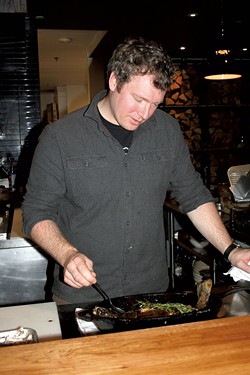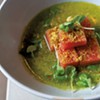Switch to the mobile version of this page.
Vermont's Independent Voice
- News
- Arts+Culture
- Home+Design
- Food
- Cannabis
- Music
- On Screen
- Events
- Jobs
- Obituaries
- Classifieds
- Personals
Browse News
Departments
-
Education

Scott Official Pushes Back on Former State…
-
News

Burlington Budget Deficit Balloons to $13.1 Million
-
Education

Senate Committee Votes 3-2 to Recommend Saunders…
- Court Rejects Roxbury's Request to Block School Budget Vote Education 0
- Norwich University Names New President Education 0
- Media Note: Mitch Wertlieb Named Host of 'Vermont This Week' Health Care 0
Browse Arts + Culture
View All
local resources
Browse Food + Drink
View All
Browse Cannabis
View All
-
Culture

'Cannasations' Podcaster Kris Brown Aims to 'Humanize'…
-
True 802

A Burlington Cannabis Shop Plans to Host…
-
Business

Judge Tosses Burlington Cannabiz Owner's Lawsuit
-
Health + Fitness

Vermont's Cannabis Nurse Hotline Answers Health Questions…
-
Business

Waterbury Couple Buy Rare Vermont Cannabis License
Browse Music
View All
Browse On Screen
Browse Events
Browse Classifieds
Browse Personals
-

If you're looking for "I Spys," dating or LTRs, this is your scene.
View Profiles
Special Reports
Pubs+More
Hen of the Wood Lands Another James Beard Nomination. How Do They Do It?
Published February 28, 2017 at 2:01 p.m. | Updated October 24, 2017 at 2:12 p.m.
A cast-iron skillet sits on red-hot coals pulled from the nearby wood-fired oven. Chef Jordan Ware, sandy haired with cheeks rosy from the heat, is about to cook an unusually large, locally farmed trout. The fish rests on a sheet pan, silver skin gleaming like chain mail. Ware tucks his thumb inside its gills to lift it, tail first, into the skillet. After a minute, he adds a knob of butter, a few cloves of garlic, and a bundle of rosemary and thyme.
Above the oven and hot coals, a massive hood whisks smoke up and out of the building. Attentive passersby will catch whiffs of it as they walk down Cherry Street toward Lake Champlain. This is Hen of the Wood's Burlington location, which opened in 2013 as part of the boutique Hotel Vermont next door.
If you consider this restaurant an extension of its namesake, which opened in 2005 and occupies an old grist mill in Waterbury, it's safe to call it the most renowned and awarded in the Green Mountains. Over the years, one Hen or the other has shown up in every major food magazine and the New York Times. The business and its chef-owner, Eric Warnstedt, have been semifinalists for the James Beard Foundation's Best Chef: Northeast award (think culinary Oscars) seven times since 2009. That's quite a coup, considering that the contest pits Hen against businesses in Boston and Portland, Maine, as well as standout spots at ski resorts. In the same period, no other Vermont restaurant has garnered more than four James Beard nods.
On this year's semifinalist list, published on February 15, the restaurant's name pops up again, but with a difference: This time, Hen in Burlington was singled out rather than its Waterbury sister. And, in another first, Ware's name joined Warnstedt's on the semifinalist list. (Mucuy Bolles and Christian Makay of Three Stones Mexican Mayan Cocina in Brattleboro were the only other Vermont chefs on the list.)
Is it a sign of changing times at the restaurant? Or a reflection of the status quo, given that Hen founder Warnstedt has already moved into a more administrative role? Along with his co-owner, William McNeil, he spends his days poring over paperwork and thinking about cash flow, employee benefits (which include health care, paid leave and a livable wage) and how to keep pace in an industry where profit margins are razor-thin. "That's a full-time job in itself," says Warnstedt, who has a calm, warm presence — notable in an industry full of adrenaline junkies.
Meanwhile, Ware, 34, does the day-to-day job of menu planning and ingredient sourcing. He first worked with Warnstedt at Burlington's now-defunct Smokejacks, joined the Hen team in Waterbury in 2009 and is now moving toward overseeing the fare at both locations.
Like Warnstedt, Ware gives credit for both Hens' successes to the "very dedicated and hardworking staffers ... right down to our dishwashers we've had since the beginning." But the prestige of these linked Vermont restaurants has other ingredients, too: a well-timed expansion, a distinct culinary identity, and a knack for creative collaboration with both suppliers and those that might otherwise be rivals.
The dual restaurants present a unique set of challenges. Each one has its own character: On a busy night, the Burlington location can feed up to 300 people, while the Waterbury restaurant maxes out at around 90. Staff tends to stay at the Waterbury location for years, treating the job as a career. In Burlington, there's higher turnover, in part because service starts earlier and lasts longer, and the pace can be grueling.
Why didn't Warnstedt give the restaurants two different names to reflect those two different business models? Because, he says, he expects the Burlington location eventually to supplant the original one. In Waterbury, "We don't own the building," Warnstedt points out, and the grist mill has structural limitations he can't change. To preserve the positive word of mouth that Hen had garnered over the years, he and McNeil opted to spread its name around.
The common appellation also reflects the culinary auteurship that links the two dining rooms. Just as a film buff can immediately identify a Wes Anderson movie by its pastels, or a music lover recognizes a favorite band after just a few chords, so avid eaters will taste the commonalities in the dishes at both Hens, even though each has its own menu that changes nightly. "There's a theme; there's a moral compass; there's a style," Warnstedt says. Take hanger steak, which shows up regularly in various incarnations on the Waterbury Hen menu. Right now, Burlington Hen is serving the flavorful cut with smoked sweet potatoes, highlighting that location's emphasis on using a wood fire.
Both restaurants source their food from farmers who thoughtfully steward the land, a factor that Ware and Warnstedt say means more to them than whether a farm's beets come out of the ground the exact same size. While some Vermont restaurants have adopted a contractual way of working with farmers — they meet in the spring and agree to buy certain crops over the course of the year — Warnstedt opts for an on-the-fly method. "I'd rather just have them send me the list [of available products]," he says. "We'll pick stuff."
There's logic behind that choice: For one thing, not every farm does every vegetable equally well. Ware cites the example of Half Pint Farm's sweet, summery cherry tomatoes, which are so stellar that he makes a certain dish only when they're available. An à la carte approach to sourcing also allows the chefs to react to farmers' needs. When Pitchfork Farm had an excess of winter pea shoots, the farmers gave Ware a good deal, and he was able to buy three pounds on the fly. They showed up on the menu the same night.
Warnstedt actually thrives on having a reduced choice of produce: "I like to have the palette shrunk," he says. He'd prefer to have the farmers "tell me what they want me to buy." It's a testament to the quietly mission-driven part of the business and its commitment to supporting the local food system.
Working with restaurants such as the Hens "is very important to us," says Beth Whiting, co-owner of Maple Wind Farm in Huntington. "These are restaurants that are changing their menus daily or weekly, and they're listing our name on the menu ... so customers who dine there can make the connection and go find the chicken at City Market. It's a nice loop for us." In addition, she's grateful for the "amazing attention to fine foods and appreciation of the farmers they do work with."
Warnstedt and Ware describe their James Beard semifinalist status as a testament to the farms they buy from, the "strong crew" and Vermont as a whole. And, of course, they're pleased with the recognition. "We want to keep the restaurant busy, and awards are a positive thing," says Warnstedt.
Both chefs are especially excited about Hen's part in keeping the Queen City on the map for food enthusiasts. Warnstedt and Ware have ties to many of Burlington's chefs and restaurateurs, and they say they hope out-of-staters who see Hen as a dining destination will come to town and eat at all of the great restaurants. "This is good for Burlington as a whole," says Ware.
On an unseasonably warm Friday in February, as fat raindrops start to splatter the Burlington sidewalk, Warnstedt stands just inside the Hen door in deep conversation with Doug Paine, chef of neighboring Juniper and Bleu Northeast Seafood. In the Hen dining room, leather couches and dim lighting create a clubhouse feel.
The two are discussing how they can help wine expert Jason Zuliani and his team, who recently opened Dedalus Wine Shop, Market & Wine Bar on Pine Street, pull off a private tasting dinner. The watchword in this circle, it seems, is that chefs who play together get paid together.
Inside, in the kitchen, a cadre of cooks are prepping for dinner. One whisks up tarragon aioli to slather on roasted potatoes. Another cuts shallots and celeriac, perhaps for a dish of pork loin with buttered celery root, rye spaetzle and pickled apple jus.
Ware removes the trout from the coals and bastes it with browned butter, then stows it, sizzling, back in the oven. When the fish is done, he places it on the bar in front of me and drops three forks nearby. The skin is crisped and brown, the garlic cloves tender, yet somehow the herbs are still bright green.
Warnstedt, Ware and I stick in our forks and twist out gobbets of tender, fatty flesh. For the first time since I walked in, the room is quiet. We eat, we smile at each other, we marvel that this fish came from a farm in Vermont — who would have thought? — and then we hold back so other Hen staff can have a chance to eat, too. Awards and glory aside, moments like these are what it's all about.
The original print version of this article was headlined "They're Cooking"
Related Locations
-
Half Pint Farm
- 180 Intervale Rd., Burlington Burlington VT 05401
- 44.49309;-73.20530
- www.halfpintfarm.com…
-
Hen of the Wood (Burlington)
- 55 Cherry St., Burlington Burlington VT 05401
- 44.47910;-73.21736
-
 802-540-0534
802-540-0534
- www.henofthewood.com…
-
Maple Wind Farm
- 1340 Carse Rd., Huntington Chittenden County VT
- 44.24404;-72.94107
-
Be the first to review this location!
Related Stories
Got something to say?
Send a letter to the editor
and we'll publish your feedback in print!
Tags: Food + Drink Features, Burlington, Jordan Ware, Eric Warnstedt, James Beard Foundation, Hen of the Wood (Burlington), Half Pint Farm, Maple Wind Farm
More By This Author
About The Author

Suzanne Podhaizer
Bio:
Former contributor Suzanne Podhaizer is an award-winning food writer (and the first Seven Days food editor) as well as a chef, farmer, and food-systems consultant. She has given talks at the Stone Barns Center for Agriculture's "Poultry School" and its flagship "Young Farmers' Conference." She can slaughter a goose, butcher a pig, make ramen from scratch, and cook a scallop perfectly.
Former contributor Suzanne Podhaizer is an award-winning food writer (and the first Seven Days food editor) as well as a chef, farmer, and food-systems consultant. She has given talks at the Stone Barns Center for Agriculture's "Poultry School" and its flagship "Young Farmers' Conference." She can slaughter a goose, butcher a pig, make ramen from scratch, and cook a scallop perfectly.
Speaking of...
-

Burlington Budget Deficit Balloons to $13.1 Million
Apr 25, 2024 -

The Café HOT. in Burlington Adds Late-Night Menu
Apr 23, 2024 -

Burlington Mayor Emma Mulvaney-Stanak’s First Term Starts With Major Staffing and Spending Decisions
Apr 17, 2024 -

Totally Transfixed: A Rare Eclipse on a Bluebird Day Dazzled Crowds in Northern Vermont
Apr 10, 2024 -

Middlebury’s Haymaker Bun to Open Second Location in Burlington’s Soda Plant
Apr 9, 2024 - More »
Comments
Comments are closed.
From 2014-2020, Seven Days allowed readers to comment on all stories posted on our website. While we've appreciated the suggestions and insights, right now Seven Days is prioritizing our core mission — producing high-quality, responsible local journalism — over moderating online debates between readers.
To criticize, correct or praise our reporting, please send us a letter to the editor or send us a tip. We’ll check it out and report the results.
Online comments may return when we have better tech tools for managing them. Thanks for reading.
- 1. La Montañuela and D’Aversa Furniture to Open Wine Bar-Showroom in Vergennes Food News
- 2. The Café HOT. in Burlington Adds Late-Night Menu Food News
- 3. New Sheep Shop Café on a South Woodbury Homestead Gathers the Herd Food + Drink Features
- 4. Three Questions for Kate Blofson of Jericho’s Born to Swarm Apiaries Agriculture
- 5. After 33 Years, Cheese & Wine Traders in South Burlington Shutters Abruptly Food News
- 6. Pauline's Café Closes in South Burlington After Almost Half a Century Food News
- 7. Montréal's Jewish Eateries Serve Classics From Around the World Québec Guide
- 1. Montréal's Jewish Eateries Serve Classics From Around the World Québec Guide
- 2. Pauline's Café Closes in South Burlington After Almost Half a Century Food News
- 3. After 33 Years, Cheese & Wine Traders in South Burlington Shutters Abruptly Food News
- 4. Jacob Holzberg-Pill Helps Cultivate Vermont’s Growing Appetite for Edible Landscaping Agriculture
- 5. Small Pleasures: Monument Farms Dairy’s Chocolate Milk Inspires Devotion Small Pleasures
- 6. Ondis Serves Seasonal Fare With a Side of Community in Montpelier Food + Drink Features
- 7. New Sheep Shop Café on a South Woodbury Homestead Gathers the Herd Food + Drink Features









































